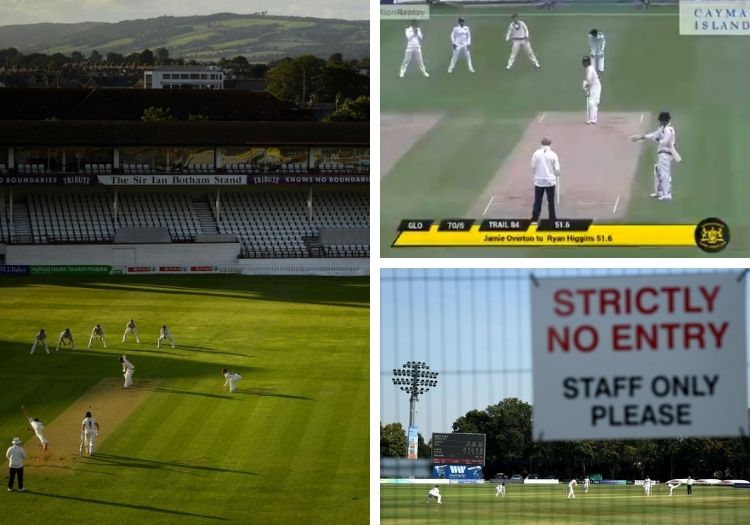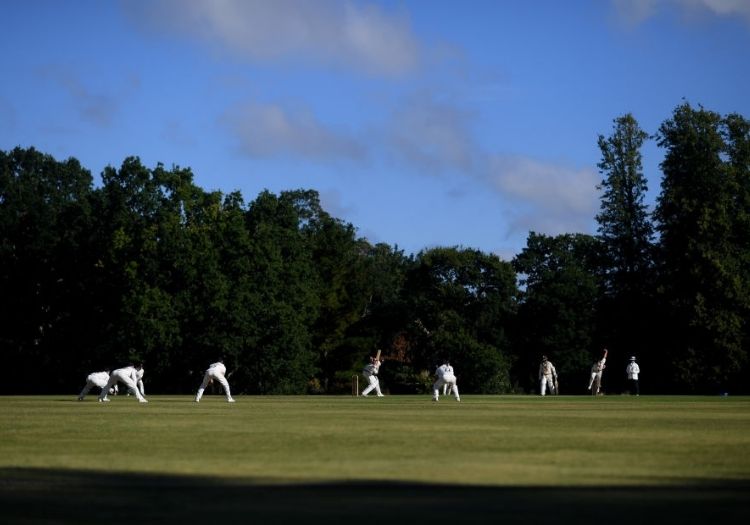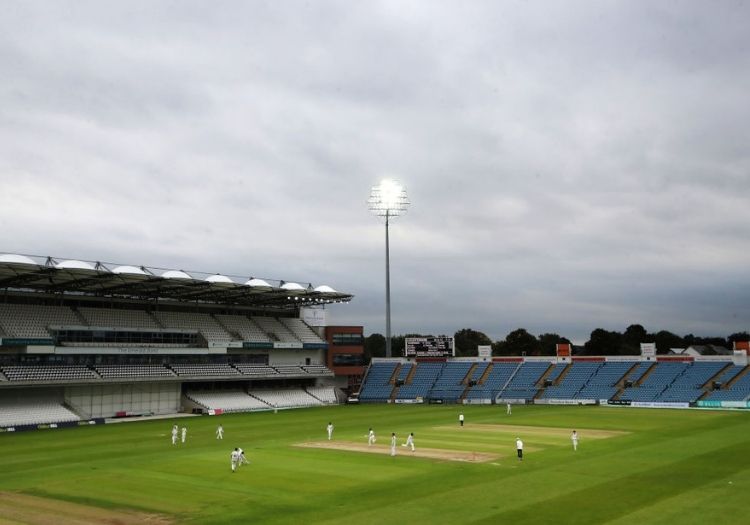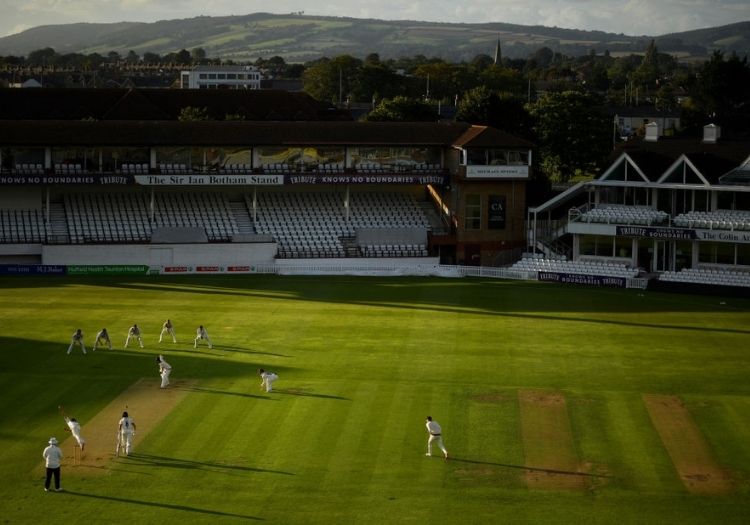JEREMY BLACKMORE tells the inside story of how counties doubled down on a commitment to live streaming once members were prevented from watching the action live, and how their collective success has saved jobs and brought in much-needed funds

Live streaming has provided a lifeline for county cricket fans in 2020. The only show in town with an entire season played behind closed doors.
Millions have watched the live streams over the last eight weeks. Those numbers are set to rocket still further with the live stream of the Bob Willis Trophy final.
Starting tomorrow at Lord’s, the showcase event will perhaps be the most accessible live county game in history.
Through an arrangement between the ECB, the counties and broadcasters, the match will be streamed on the Sky Sports Cricket YouTube channel as well as the BBC and ECB websites and BBC iPlayer.
Meanwhile, Sky Sports Cricket YouTube channel is streaming the five-match England Women IT20 Series against West Indies, in addition to being shown on Sky Sports Cricket.
For the counties, streaming has played a critical role as they grapple with an unprecedented financial challenge. Many clubs have asked members to ‘donate’ their memberships in this hardest of summers, so the stream has been a way to give something back and say thank you.
It has also allowed counties to reward existing sponsors, or in one case, to bring in increased revenue. Somerset believe their sponsorship deal with Trade Nation could have been the difference between redundancies and not.
Nottinghamshire took the first tentative steps towards live streaming in June 2014 with two fixed cameras on the Trent Bridge Pavilion.
The technology’s importance has expanded rapidly since, revealing a huge ‘hidden’ audience for county cricket and further boosting its appeal as an attractive sponsorship proposition.
Many clubs were already planning to enhance their streams still further this year, but the pandemic has accelerated that investment and acted as a catalyst for innovation.

Hampshire played their home games in the Bob Willis Trophy at Arundel
That means multi-camera coverage in most cases. Other innovations include slow-mo and drone cams. Ball-tracking cameras are in use at several counties, important for faster-paced T20 Blast action. Replays are standard as are in-play statistical graphics.
Viewers no longer need miss out on boundaries or catches in the deep.
At Emirates Old Trafford, Lancashire head of communications James Price says: “We feel this year, it is as important as ever to get members as close to the action as possible, not from a financial standpoint but from a health and wellbeing perspective. We know members will have been hit hardest by the inability to attend games and meet up with friends in their cricket circle over the summer period, so we want to give them the best possible coverage of our matches as they are unable to be here in person to support the team.”
The same is true at Hove, says Sussex senior marketing executive Matt Neocleous: “We have massively improved the streaming service this year and that has been vital in one of the most difficult years the club has experienced.
“Members have been able to get closer to the action than ever before via the live stream and this is extremely important when asking them to donate their membership to the club.”
At Glamorgan, the club say the generosity of those who chose to donate their membership fees in vast numbers, meant the club was able to carry out one of the biggest upgrades around the circuit.
At Middlesex where members have not been offered a refund, head of marketing and communication Steve Fletcher says the stream has been a hugely important part of their engagement: “When members cannot physically come to our games and watch us live, the next best thing is for them to be able to sit at home, from the safety and comfort of their own sofa, and enjoy all action as it’s brought right to them. We are trying to deliver value to members through providing a quality stream.”

Grounds looked bereft without fans
There are a variety of models. Some clubs have hired in production companies, while others have bought their own equipment and are running the service entirely in-house, investing for the future. For others it’s a mixture of the two. Many have used experienced television camera crews.
Other additions include highlights packages similar to those usually played on big screens during the Blast. Exclusives such as a recent interview with retiring Warwickshire legend Ian Bell play during scheduled breaks and rain delays.
This extra investment is not without its challenges. It’s meant clubs adapting at pace at a time when many are operating on a skeleton staff due to furlough. A tight turnaround before the start of the season and only a few ‘friendlies’ meant little opportunity to test set-ups before the opening fixtures.
Moreover, there has been limited capacity with only essential staff permitted on matchdays and grounds split into different zones because of COVID protocols.
Some learning on the job was inevitable. Despite this, clubs have risen to the challenge and worked quickly to find solutions despite technical challenges ranging from streams crashing due to sheer demand, to the intricacies of setting up multi-camera operations at rural outgrounds.
For the Blast, several counties have been keen to try something different and make each game more of a ‘show’. That means presenters, pundits and interviews pre- and post-match to replicate the entertainment factor and atmosphere the format delivers in a stadium.
That often means using their own commentary teams rather than synching with the BBC, including some familiar faces for T20 audiences. At Edgbaston, the Bears use matchday hosts Beccy Wood and Adam Bridge to translate the live matchday experience to the stream. Tim Ambrose serves as co-commentator to provide expert knowledge. Inbox cameras add to the broadcast feel.
Commentators can also talk directly to the pictures. Steve Snell, part of the coaching setup at Taunton, is part of Somerset’s commentary team.
PITCH REPORT: @Snelly83 takes us through what to expect from today's wicket
— Somerset Cricket 🏏 (@SomersetCCC) September 18, 2020
LIVE STREAM -> https://t.co/dF6GhNA901#SOMvNOR #WeAreSomerset pic.twitter.com/2LhpcaglK6
Somerset digital exec Ben Warren highlights an example where, using a replay of a catch from a different angle, Snell was able to talk about the way James Hildreth moved around and anticipated the ball.
“For me, that was a bit of a watershed moment,” he says. “It just showed how valuable that was. I certainly wouldn't have picked that up on the ordinary cameras. But using our alternate camera angle, using an expert in coaching fielding and bringing the two together with our technology, we were able to explain something to the viewer that probably felt more Sky television than it did live streaming.”
This year also saw the advent of a new domestic setup for women’s cricket. All eight regional teams competing in the Rachael Heyhoe-Flint Trophy have live-streamed their matches on their respective websites and YouTube with live commentary. Most have worked with the counties to make use of the technology on offer.
In its infancy streaming took place via a link from club websites and was unlisted on YouTube. This still happens in some cases, although most games are now easily searchable on YouTube.
Gloucestershire and Warwickshire ask fans to register (for free) to watch the stream. This provides both clubs with a database for future marketing opportunities.
Facebook Live is another channel used by some, while Warwickshire and Hampshire also have their own apps. Worcestershire meanwhile launched a new digital subscription package offering access to the stream to those who switched their membership to an ‘Exclusive 2020’ package.
For the Blast, the ECB launched a portal providing access to each match, allowing fans to switch from one to another to catch the best of the action once they had completed a simple registration process.
Making the England Women series and Bob Willis Trophy Final available to watch online is an example of the ECB collaborating with the counties and its broadcast partners to give fans opportunity to watch cricket.
Bob Willis Trophy final to be streamed online by BBC, Sky and ECB
At Lord’s this week, the ECB are working closely with Middlesex who have successfully streamed five home Blast games there over the past few weeks. Four manned cameras and two stationary cameras will be in use while Somerset will also use a slow-mo camera.
Sky’s coverage will feature a commentary team including former England captain Michael Atherton.
The BBC will show the live stream on the BBC Sport website and BBC iPlayer in addition to providing radio commentary from its ‘Test Match Special’ team on Radio 5 Live Sport Extra and online. Local commentary will also be available on BBC Radio Somerset and BBC Essex.
With more eyeballs than ever on county streams, the service is under greater scrutiny than ever before. Given it is not a broadcast television set-up, the feedback has been overwhelmingly positive. Clubs have received large numbers of social media posts, emails and phone calls praising the uplift in quality.
Whenever technical issues have affected quality or availability, some fans have been quick to express dissatisfaction. It has been a careful exercise in trying to explain what each club is trying to do and the scale of the operation behind the scenes.
Because counties have streamed matches in different ways, work is ongoing to understand their full reach, although it’s already clear that total views run into many millions. Several clubs report total views of around two million for their home Blast games. Somerset’s reach was further boosted by a large Pakistan audience tuning in to watch Babar Azam in action at Taunton.
Traditional routes for sponsors to get value out of commercial links with counties have been curtailed with no hospitality and no-one in grounds to see advertising hoardings. Clubs have been forced to look for other ways to reward sponsors.
Fletcher adds: “What we wanted to do is deliver a stream that allowed us to at least give them some brand exposure. You're not going to replace the hospitality element, but it's just looking to redistribute a value that they should be getting in other areas.”

Clubs put huge work into their live streams in order to offer their members some respite in a tough summer
This has been another driver for innovation. BBC rules preclude the use of commercial logos on screen alongside their commentary. However, it is permissible to use commercial logos in the build-up to the stream and during scheduled breaks, with a clear break point.
The use by some counties of their own commentary teams allows in-play adverts, commercial promotions, logos and other segments. Gloucestershire are not the only county whose sponsors have received huge exposure through clips taken from the stream and posted on social media.
Somerset meanwhile joined forces with online trading platform Trade Nation, the first company to sponsor a live county stream. The company is featured prominently in the live ‘show’ and fans watching at home have the chance to win cash and other prizes. A six striking one of the prominent Trade Nation signboards in the stands means a donation to charity, a regular talking point throughout the commentary.
“This is a real partnership,” says Warren, “working with a company, bringing in a really, really significant financial kickback into the club, which is just huge for us. It could be the difference between redundancies and not. We’re just delighted to be able to get it over the line.”
At Cardiff, Glamorgan also pursued new commercial opportunities. Three of their Blast matches were sponsored by companies who were heavily promoted through the club’s social media and streams.
The innovations of 2020 are here to stay. Hopefully next season will see crowds returning. If so, it prompts questions about how to continue the same level of streaming while catering for fans and sponsors. Hospitality boxes commandeered as production studios will return to their original use.
At Edgbaston, head of media and communications Tom Rawlings says: “The question for us next year is how can we take the on-field elements that we do in the bowl to the crowd, can we just bring those elements into the live stream for next year?”
For the final time in red ball cricket, Ian Bell arrives at the crease. 😢
— Warwickshire CCC 🏏 (@WarwickshireCCC) September 8, 2020
Lovely touch, @GlamCricket 👏.
Live Stream 🖥 https://t.co/7m7hlx2qPy
App 📱 https://t.co/VM39jupE35
🐻#YouBears #GLAvWAR pic.twitter.com/MFXNEeMoSe
Ultimately Rawlings does not believe that a live stream and the production around it will ever replace going to a game.
“It's a completely different proposition, your ability to go and watch live sport and the experience of being in the bowl and being there is so different from watching online or through TV. So, it’s something that we certainly believe is in here to stay and hopefully can get more investment to develop it further.”
With the close season approaching, clubs can look back on a job well done. Warren sums up: “From this time last year to the things that we're doing now, it’s just incredible. I would never ever have thought that we would be able to.
“It was always part of the pipeline. But to be able to pull it off and do it is still one of the things that you just look back on and think, it’s just a fantastic thing to be involved with. We’re very fortunate to be at the games and to have that ability to beam the pictures to so many people at home is pretty rewarding.”
For unrivalled coverage of the county season, subscribe to The Cricketer and receive 3 issues for £5